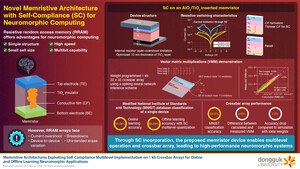The Fight Against Cancer: The Promise of HIF-1 Inhibitors
SEOUL, South Korea, March 14, 2019 /PRNewswire/ -- Tumor hypoxia, a characteristic feature of solid tumors, is considered as a potential therapeutic problem for cancer therapy. Scientists at Dongguk University have put together an exhaustive summary of what we know about chemicals that inhibit the action of hypoxia-inducible factor-1 (HIF-1) protein, an important regulator of the tumor microenvironment. A better understanding of how these inhibitors work, could be used to develop potent anti-cancer drugs that would increase the effectiveness of existing treatments.
Tumors grow quickly, using up available oxygen, becoming "hypoxic" i.e., lacking enough oxygen. To survive and continue growing, HIF-1 protein is increased in tumor cells, which boosts biochemical reactions involved in energy production and angiogenesis. When this occurs, cancers become resistant to standard treatments like radiation and chemotherapy. So, blocking HIF-1 functioning may be one way to improve cancer therapy. Scientists led by Dr. Kyeong Lee collated existing studies on HIF-1 inhibitors to understand how these molecules function depending on their chemical structure. As none of these inhibitors are commercially available, the scientists hope that knowledge gleaned from a decade of research will change this scenario in future. Dr. Lee observes, "there are two ways to inhibit HIF-1: by either directly inhibiting its functioning (i.e., prevent its transcriptional activation) or by indirectly blocking its activation through interactions with other molecules. We've mostly seen indirect inhibitors, and the idea is to figure out what they directly target to block HIF-1."
Based on their own work and other studies, the investigators split HIF-1 inhibitors into 10 groups of differing chemical scaffolds with structure-activity relationships (SAR) study. Of these, the most studied inhibitors were the adamantyl-based and boron-based inhibitors, which inhibit HIF-1 by targeting mitochondrial proteins and heat-shock proteins involved in stress responses. While the YC-1 compound, a rare direct and indirect inhibitor suppressed HIF-1 through diverse molecular pathways.
Dr. Lee is optimistic about the prospect. "We think these SAR-based data are the invaluable springboard for developing effective and safe drugs that can target specific proteins in tumor microenvironment and really improve existing therapies."
This comprehensive review is particularly profound since all the inhibitors investigated here show immense promise for further development of anti-cancer drugs.
Reference
Authors: |
Deepak Bhattarai, Xuezhen Xu, and Kyeong Lee |
Title of original paper: |
Hypoxia-inducible factor-1 (HIF-1) inhibitors from the last decade (2007 to 2016): A "structure–activity relationship" perspective |
Journal: |
Medicinal Research Reviews |
DOI: |
10.1002/med.21477 |
Contact:
Ritwika Roy
+91 22 67148888
[email protected]
SOURCE Dongguk University
WANT YOUR COMPANY'S NEWS FEATURED ON PRNEWSWIRE.COM?
Newsrooms &
Influencers
Digital Media
Outlets
Journalists
Opted In




Share this article